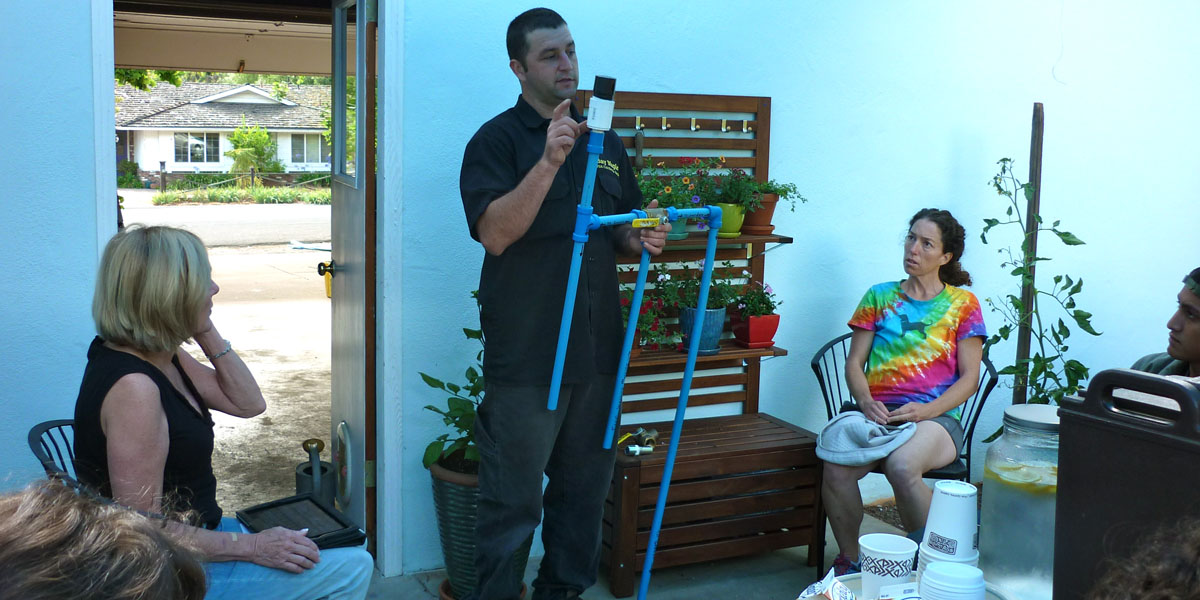Lawn-Be-Gone! Rooted In Native Plants
Transitioning to native plants can be daunting. What to plant? When? How much water does each pl ant take? That’s why we created our Lawn-Be-Gone program. But if you need some fodder to push you over the native plant edge, these stats might move you to make the change:
ant take? That’s why we created our Lawn-Be-Gone program. But if you need some fodder to push you over the native plant edge, these stats might move you to make the change:
Go Native! Top Ten Reasons to Replace Your Lawn with Native Plants
- Save Water. Lawns require much more water than our climate can provide. Irrigation of lawns accounts for the largest single use of residential potable water, water that may have been transported hundreds of miles to your home. Reducing our draw of water from the Delta and the Sierras helps maintain their ecosystems. Reducing our draw on groundwater keeps our valley from subsiding!
- Healthier Creeks and Groundwater. Fertilizers, herbicides and pesticides are top polluters in our creeks and bay, killing aquatic life and spreading disease. Properties adjacent to creeks or storm drains, should landscape without these additives. Only native plants are allowed within riparian zones.
- Less Storm Water Runoff. Deep roots of native plants and trees surrounded by mulch retain more water onsite than turf, and substantially more than synthetic turf. Plan ahead for El Niño.
- More Free Time. Lawns can take as much time to manage as vegetable gardens, and what do you harvest? Grass clippings, blech! Native plants don’t require fertilizer, herbicides, pesticides and benefit from just annual or semiannual pruning. Not sure about how to maintain your landscaping? Hire a Certified Green Gardener.
- Save Money. All the mowing, fertilizer, herbicides and irrigation of lawns cost a lot of money. Native plants need substantially less effort and money to maintain.
- Cash for Grass. Santa Clara Valley Water District will pay you up to $2/square foot to replace your lawn. Since 2013, 3 million square feet of turf has been removed in our valley. Contact SCVWD or your water company for details.
- Good Bugs, Not Bad Bugs. Mosquitoes in our dry summer? There must be a lawn nearby. Frequent watering creates tiny pools just right for mosquitoes to breed. Native plants attract beneficial bugs and birds, the ones that eat mosquitoes and other pests.
- Biodiversity. Other than hardscape, there isn’t a more inhospitable surface to biodiversity than the monoculture of lawns. With your excess time and money freed up from lawn care, buy yourself binoculars. You’ll be amazed with the variety of birds, insects and wildlife that native plants attract. Native wildlife evolved with native plants and is dependent on them for survival.
- Less Greenhouse Gases. Manufacture and transportation of fertilizers, herbicides, pesticides, and mowers has a substantial carbon footprint. Transportation, pumping and treatment of water requires energy. When you save water, you also save energy!
- Smart Choice. Landscaping with plants that are native to our climate is a smart choice. If you want soft areas for kiddies to roll in, native grasses come in all three flavors: seeds, plugs and sod.





